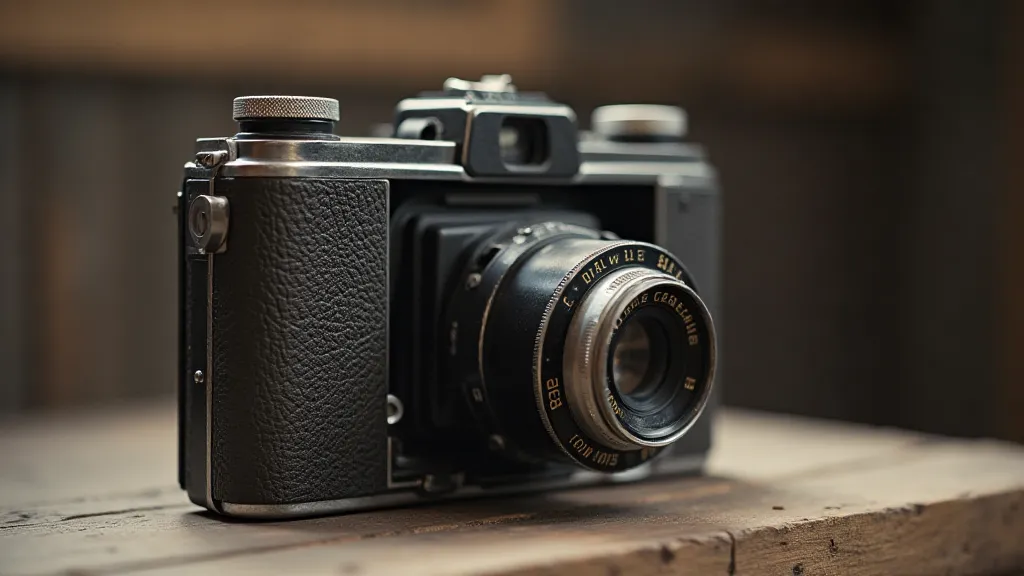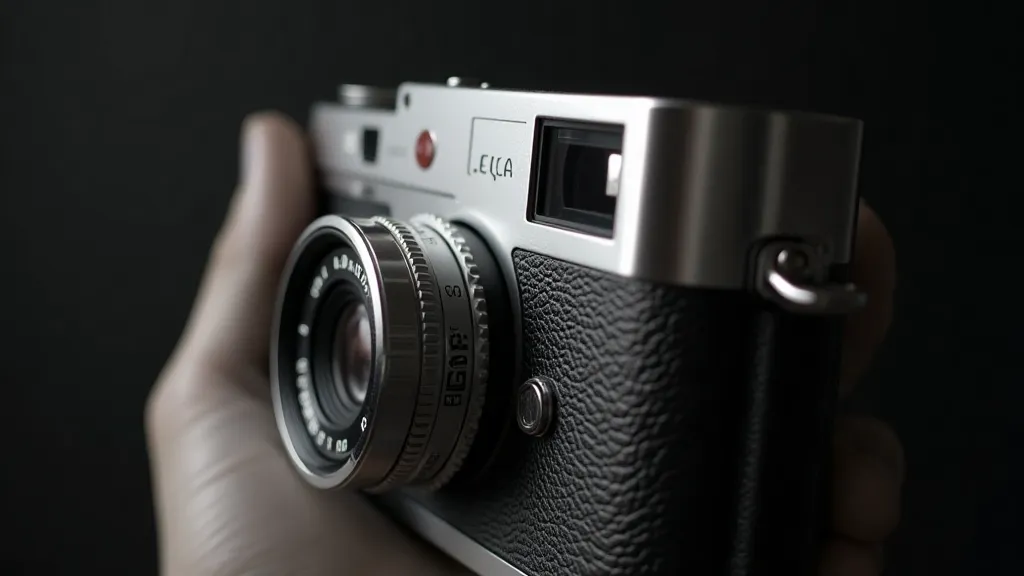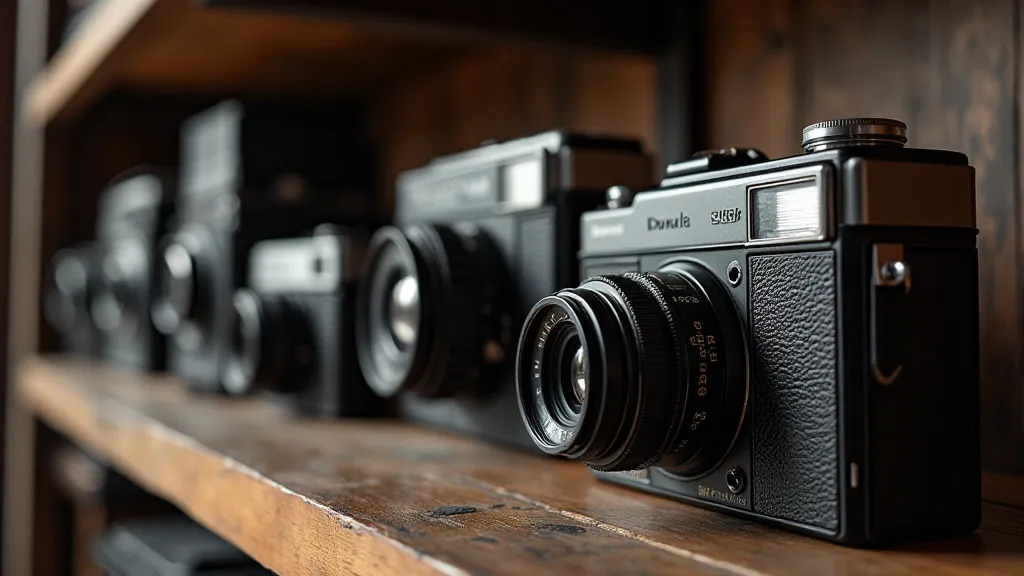The Silent Witness: Cameras as Records of Social Change
There’s a quiet dignity to an antique camera. More than just a piece of machinery, each one is a time capsule, a frozen moment of ingenuity and aspiration. Holding a Kodak Brownie, a Graflex, or a Leica from a bygone era is to hold a portal to the past, a tangible link to the people who lived and breathed within its photographic gaze. We, as collectors and enthusiasts, are not just acquiring objects; we're inheriting stories, becoming custodians of a visual history that resonates far beyond the mechanics of aperture and shutter speed. These "silent witnesses," as I like to call them, captured not just landscapes and portraits, but the very fabric of societal shifts, human triumphs, and profound struggles.
Imagine the photographer holding a Kodak Box Brownie in the early 1900s. It wasn’s just about capturing a family portrait; it was about democratizing photography. Prior to this, photography was an expensive and complicated pursuit, largely confined to professionals and the wealthy. The Brownie, priced at a mere dollar, brought photography to the masses, unleashing a wave of amateur picture-taking that irrevocably changed the visual landscape. Suddenly, ordinary people could document their lives, their communities, and their evolving world. These snapshots, often faded and imperfect, offer an unparalleled intimacy with the past – a child's first steps, a picnic in a rural field, a bustling city street teeming with life. These are not curated images designed for posterity; they are honest, unvarnished glimpses into the everyday existence of ordinary people.

The Graflex and the Rise of Photojournalism
As the world hurtled towards the tumultuous decades of the 20th century, a new kind of camera emerged – one built for speed, flexibility, and a more direct engagement with the unfolding drama. The Graflex, particularly the Speed Graphic, became the workhorse of photojournalists covering everything from the Dust Bowl to World War II. The ability to use interchangeable lenses and flash attachments, combined with its relatively compact size, made it an invaluable tool for capturing fleeting moments of history. Consider the iconic photographs of Dorothea Lange, her images of migrant workers during the Great Depression, a stark and devastating chronicle of human suffering and resilience. These images, captured with a Graflex, didn’s just document the crisis; they helped to galvanize public opinion and inspire action.
My grandfather, a freelance photographer during the Korean War, carried a Graflex Speed Graphic. He rarely spoke about his experiences, but I remember seeing his battered camera case tucked away in the attic. It wasn’t just a camera; it was a symbol of his service, his observations, and his silent contribution to a historical narrative. Holding that camera today, I feel a profound connection to him, to the soldiers he photographed, and to the countless untold stories held within its metallic shell.
Leica and the Art of Candid Observation
The Leica, introduced in the 1920s, represented a paradigm shift in photographic technology. Its compact size, coupled with its high-quality lens and sophisticated shutter mechanism, allowed photographers to capture images with unprecedented speed and discretion. Henri Cartier-Bresson, the master of the "decisive moment," embraced the Leica as his primary tool, capturing fleeting moments of beauty and humanity with breathtaking precision. His photographs, often candid and unposed, reveal the poetry of everyday life – a child laughing, a couple dancing, a lone figure walking through a crowded street. The Leica democratized street photography, allowing photographers to become unobtrusive observers, capturing the essence of a scene without disrupting its flow.
The craftsmanship of these early Leica cameras is truly remarkable. Each component, from the brass body to the intricate shutter mechanism, was meticulously crafted by skilled artisans. The tolerances were incredibly tight, and the cameras were built to last – many of them still functioning perfectly after decades of use. It's a testament to the dedication and ingenuity of the engineers and craftsmen who brought these iconic cameras into being.

The Social Impact of Early Color Photography
While black and white photography dominated the early decades of the 20th century, the advent of color photography brought a new dimension to the photographic record. Kodachrome, introduced in 1935, allowed for the creation of vibrant, long-lasting color transparencies, transforming the way we perceive and document the world. Suddenly, the mundane could become extraordinary, the ordinary could become captivating. Color photography captured not just the shape and form of a scene, but also its mood, its atmosphere, its very essence.
Consider the work of William Eggleston, who used Kodachrome to document the everyday beauty of the American South. His images, often seemingly banal – a gas station, a refrigerator, a parking lot – reveal a profound appreciation for the overlooked details of contemporary life. Eggleston's work challenged conventional notions of art and photography, demonstrating that beauty could be found in the most unexpected places.
Preserving the Past, Understanding the Present
Collecting antique cameras is more than just acquiring objects; it’s about preserving a legacy, a visual history that speaks volumes about the people, the places, and the events that shaped our world. These "silent witnesses" offer a unique and invaluable perspective on the past, allowing us to connect with previous generations in a tangible and meaningful way. The patina of age, the subtle imperfections, the faint traces of handling – all these details tell a story, a narrative that transcends the mechanics of photography.
Restoring an antique camera is an act of preservation, a way of ensuring that these invaluable artifacts endure for generations to come. Whether it’s carefully cleaning the lens, repairing the bellows, or replacing a missing part, the process requires patience, skill, and a deep appreciation for the craftsmanship of the original manufacturer. Even the act of simply researching the camera's history, understanding its context, and appreciating its significance is a rewarding experience.

As we navigate the complexities of the 21st century, these "silent witnesses" offer a poignant reminder of the enduring power of photography to document, to inspire, and to connect us to the shared human experience. They stand as testaments to the ingenuity of past generations, the importance of preserving our history, and the enduring beauty of a single, perfectly captured moment.





